RBS 2011 Annual Report Download - page 104
Download and view the complete annual report
Please find page 104 of the 2011 RBS annual report below. You can navigate through the pages in the report by either clicking on the pages listed below, or by using the keyword search tool below to find specific information within the annual report.-
 1
1 -
 2
2 -
 3
3 -
 4
4 -
 5
5 -
 6
6 -
 7
7 -
 8
8 -
 9
9 -
 10
10 -
 11
11 -
 12
12 -
 13
13 -
 14
14 -
 15
15 -
 16
16 -
 17
17 -
 18
18 -
 19
19 -
 20
20 -
 21
21 -
 22
22 -
 23
23 -
 24
24 -
 25
25 -
 26
26 -
 27
27 -
 28
28 -
 29
29 -
 30
30 -
 31
31 -
 32
32 -
 33
33 -
 34
34 -
 35
35 -
 36
36 -
 37
37 -
 38
38 -
 39
39 -
 40
40 -
 41
41 -
 42
42 -
 43
43 -
 44
44 -
 45
45 -
 46
46 -
 47
47 -
 48
48 -
 49
49 -
 50
50 -
 51
51 -
 52
52 -
 53
53 -
 54
54 -
 55
55 -
 56
56 -
 57
57 -
 58
58 -
 59
59 -
 60
60 -
 61
61 -
 62
62 -
 63
63 -
 64
64 -
 65
65 -
 66
66 -
 67
67 -
 68
68 -
 69
69 -
 70
70 -
 71
71 -
 72
72 -
 73
73 -
 74
74 -
 75
75 -
 76
76 -
 77
77 -
 78
78 -
 79
79 -
 80
80 -
 81
81 -
 82
82 -
 83
83 -
 84
84 -
 85
85 -
 86
86 -
 87
87 -
 88
88 -
 89
89 -
 90
90 -
 91
91 -
 92
92 -
 93
93 -
 94
94 -
 95
95 -
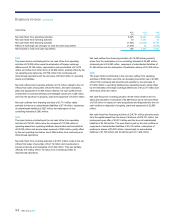 96
96 -
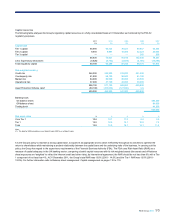 97
97 -
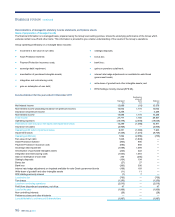 98
98 -
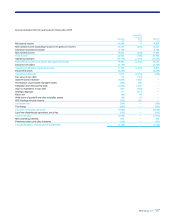 99
99 -
 100
100 -
 101
101 -
 102
102 -
 103
103 -
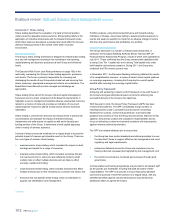 104
104 -
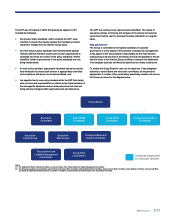 105
105 -
 106
106 -
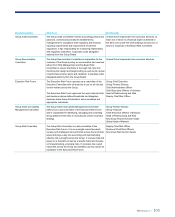 107
107 -
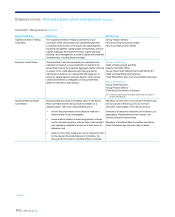 108
108 -
 109
109 -
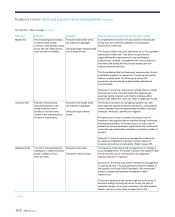 110
110 -
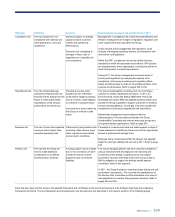 111
111 -
 112
112 -
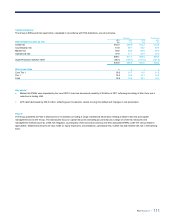 113
113 -
 114
114 -
 115
115 -
 116
116 -
 117
117 -
 118
118 -
 119
119 -
 120
120 -
 121
121 -
 122
122 -
 123
123 -
 124
124 -
 125
125 -
 126
126 -
 127
127 -
 128
128 -
 129
129 -
 130
130 -
 131
131 -
 132
132 -
 133
133 -
 134
134 -
 135
135 -
 136
136 -
 137
137 -
 138
138 -
 139
139 -
 140
140 -
 141
141 -
 142
142 -
 143
143 -
 144
144 -
 145
145 -
 146
146 -
 147
147 -
 148
148 -
 149
149 -
 150
150 -
 151
151 -
 152
152 -
 153
153 -
 154
154 -
 155
155 -
 156
156 -
 157
157 -
 158
158 -
 159
159 -
 160
160 -
 161
161 -
 162
162 -
 163
163 -
 164
164 -
 165
165 -
 166
166 -
 167
167 -
 168
168 -
 169
169 -
 170
170 -
 171
171 -
 172
172 -
 173
173 -
 174
174 -
 175
175 -
 176
176 -
 177
177 -
 178
178 -
 179
179 -
 180
180 -
 181
181 -
 182
182 -
 183
183 -
 184
184 -
 185
185 -
 186
186 -
 187
187 -
 188
188 -
 189
189 -
 190
190 -
 191
191 -
 192
192 -
 193
193 -
 194
194 -
 195
195 -
 196
196 -
 197
197 -
 198
198 -
 199
199 -
 200
200 -
 201
201 -
 202
202 -
 203
203 -
 204
204 -
 205
205 -
 206
206 -
 207
207 -
 208
208 -
 209
209 -
 210
210 -
 211
211 -
 212
212 -
 213
213 -
 214
214 -
 215
215 -
 216
216 -
 217
217 -
 218
218 -
 219
219 -
 220
220 -
 221
221 -
 222
222 -
 223
223 -
 224
224 -
 225
225 -
 226
226 -
 227
227 -
 228
228 -
 229
229 -
 230
230 -
 231
231 -
 232
232 -
 233
233 -
 234
234 -
 235
235 -
 236
236 -
 237
237 -
 238
238 -
 239
239 -
 240
240 -
 241
241 -
 242
242 -
 243
243 -
 244
244 -
 245
245 -
 246
246 -
 247
247 -
 248
248 -
 249
249 -
 250
250 -
 251
251 -
 252
252 -
 253
253 -
 254
254 -
 255
255 -
 256
256 -
 257
257 -
 258
258 -
 259
259 -
 260
260 -
 261
261 -
 262
262 -
 263
263 -
 264
264 -
 265
265 -
 266
266 -
 267
267 -
 268
268 -
 269
269 -
 270
270 -
 271
271 -
 272
272 -
 273
273 -
 274
274 -
 275
275 -
 276
276 -
 277
277 -
 278
278 -
 279
279 -
 280
280 -
 281
281 -
 282
282 -
 283
283 -
 284
284 -
 285
285 -
 286
286 -
 287
287 -
 288
288 -
 289
289 -
 290
290 -
 291
291 -
 292
292 -
 293
293 -
 294
294 -
 295
295 -
 296
296 -
 297
297 -
 298
298 -
 299
299 -
 300
300 -
 301
301 -
 302
302 -
 303
303 -
 304
304 -
 305
305 -
 306
306 -
 307
307 -
 308
308 -
 309
309 -
 310
310 -
 311
311 -
 312
312 -
 313
313 -
 314
314 -
 315
315 -
 316
316 -
 317
317 -
 318
318 -
 319
319 -
 320
320 -
 321
321 -
 322
322 -
 323
323 -
 324
324 -
 325
325 -
 326
326 -
 327
327 -
 328
328 -
 329
329 -
 330
330 -
 331
331 -
 332
332 -
 333
333 -
 334
334 -
 335
335 -
 336
336 -
 337
337 -
 338
338 -
 339
339 -
 340
340 -
 341
341 -
 342
342 -
 343
343 -
 344
344 -
 345
345 -
 346
346 -
 347
347 -
 348
348 -
 349
349 -
 350
350 -
 351
351 -
 352
352 -
 353
353 -
 354
354 -
 355
355 -
 356
356 -
 357
357 -
 358
358 -
 359
359 -
 360
360 -
 361
361 -
 362
362 -
 363
363 -
 364
364 -
 365
365 -
 366
366 -
 367
367 -
 368
368 -
 369
369 -
 370
370 -
 371
371 -
 372
372 -
 373
373 -
 374
374 -
 375
375 -
 376
376 -
 377
377 -
 378
378 -
 379
379 -
 380
380 -
 381
381 -
 382
382 -
 383
383 -
 384
384 -
 385
385 -
 386
386 -
 387
387 -
 388
388 -
 389
389 -
 390
390 -
 391
391 -
 392
392 -
 393
393 -
 394
394 -
 395
395 -
 396
396 -
 397
397 -
 398
398 -
 399
399 -
 400
400 -
 401
401 -
 402
402 -
 403
403 -
 404
404 -
 405
405 -
 406
406 -
 407
407 -
 408
408 -
 409
409 -
 410
410 -
 411
411 -
 412
412 -
 413
413 -
 414
414 -
 415
415 -
 416
416 -
 417
417 -
 418
418 -
 419
419 -
 420
420 -
 421
421 -
 422
422 -
 423
423 -
 424
424 -
 425
425 -
 426
426 -
 427
427 -
 428
428 -
 429
429 -
 430
430 -
 431
431 -
 432
432 -
 433
433 -
 434
434 -
 435
435 -
 436
436 -
 437
437 -
 438
438 -
 439
439 -
 440
440 -
 441
441 -
 442
442 -
 443
443 -
 444
444 -
 445
445 -
 446
446 -
 447
447 -
 448
448 -
 449
449 -
 450
450 -
 451
451 -
 452
452 -
 453
453 -
 454
454 -
 455
455 -
 456
456 -
 457
457 -
 458
458 -
 459
459 -
 460
460 -
 461
461 -
 462
462 -
 463
463 -
 464
464 -
 465
465 -
 466
466 -
 467
467 -
 468
468 -
 469
469 -
 470
470 -
 471
471 -
 472
472 -
 473
473 -
 474
474 -
 475
475 -
 476
476 -
 477
477 -
 478
478 -
 479
479 -
 480
480 -
 481
481 -
 482
482 -
 483
483 -
 484
484 -
 485
485 -
 486
486 -
 487
487 -
 488
488 -
 489
489 -
 490
490
 |
 |

102 RBS Group 2011
Introduction*: Stress testing
Stress testing describes the evaluation of a bank’s financial position
under severe but plausible stress scenarios. Stress testing refers to the
application of individual stress tests and the broader framework under
which these tests are developed, evaluated and used within the Group’s
decision-making process in the context of the wider economic
environment.
Internal stress tests
The Group’s stress testing framework is designed to embed stress testing
as a key risk management technique into mainstream risk reporting,
capital planning and business processes at both Group and divisional
levels.
The Executive Risk Forum (see Risk governance on page 103) is the
main body overseeing the Group’s stress testing approach, processes
and results. The forum is primarily responsible for reviewing and
challenging the results of any Group-wide stress test and ensuring that,
where necessary, appropriate management actions are undertaken. The
Board Risk Committee will provide oversight and challenge as
appropriate.
Stress testing forms part of the Group’s risk and capital management
framework and is a major component of the Basel III requirements. It
highlights to senior management potential adverse unexpected outcomes
related to a mixture of risks and provides an indication of how much
capital might be required to absorb losses should adverse scenarios
materialise.
Stress testing is used at both divisional and Group levels to assess risk
concentrations and estimate the impact of stressed earnings,
impairments and write-downs on capital as well as the liquidity and
funding position of the Group. It determines overall capital adequacy
under a variety of adverse scenarios.
Aseries of stress events are monitored on a regular basis to assess the
potential impact of a severe yet plausible event on the Group. There are
four core types of scenario stress testing:
xmacroeconomic stress testing, which considers the impact on both
earnings and capital for a range of scenarios;
xenterprise-wide stress testing, which considers scenarios that are
not macroeconomic in nature but are sufficiently broad to entail
multiple risks or affect multiple divisions and are likely to affect
earnings, capital and funding;
xcross-divisional stress testing, which includes scenarios that affect
multiple divisions due to their sensitivity to a common risk factor; and
xdivisional and risk-specific stress testing, which is undertaken to
support risk identification and management.
*unaudited
Portfolio analysis, using historical performance and forward-looking
indicators of change, uses stress testing to assess potential exposure to
events and seeks to quantify the impact of an adverse change in factors
that drive the performance and profitability of a portfolio.
Industry-wide stress tests
The Group takes part in a number of industry-wide stress tests, in
particular, the European Banking Authority Stress Test and IMF UK
Financial Sector Assessment Program, results of which were published in
July 2011. These confirmed that the Group remains well capitalised with
a strong Core Tier 1 capital ratio and a strong Total capital ratio under
both baseline and adverse scenarios. During 2011, the Group also
undertook the FSA anchor scenario test.
In December 2011, the European Banking Authority published the results
of its recapitalisation exercise - a review of banks’ actual capital positions
on sovereign exposures - showing the Group had no overall capital
shortfall after including the sovereign capital buffer.
Group Policy Framework*
Achieving and sustaining a robust control framework in line with those of
the Group’s strongest international peers is critical to achieving the
successful delivery of the Group’s risk objectives.
With this goal in mind, the Group Policy Framework (GPF) has been
revised and broadened. The GPF consolidates a large number of
individual policies under a consistent and structured overarching
framework for conduct, control and governance. It provides clear
guidance and controls on how the Group does business, linked to its risk
appetite, its business conduct and compliance responsibilities and its
focus on delivering a control environment consistent with best practice
against relevant external benchmarks.
The GPF and related initiatives aim to ensure that:
xthe Group has clear control standards and ethical principles to cover
the risks that it faces to support effective risk management and meet
regulatory and legal requirements;
xpolicies are followed across the Group and compliance can be
clearly evidenced, assessed and reported by line management; and
xthe control environment is monitored and overseen through good
governance.
Communication and training programmes are provided to all relevant staff
as the policies are embedded, ensuring that staff are aware of their
responsibilities. The GPF is structured to ensure that policy standard
owners and sponsors review their policies on a regular basis, with any
identified shortfalls against industry best practice documented and
addressed within an agreed time frame.
Business review Risk and balance sheet management continued
